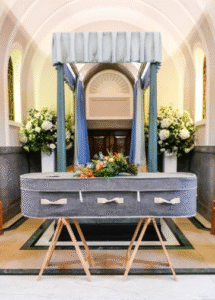Topic
Exploring the Diverse Types of Women: Celebrating Individuality

Introduction
Women are incredibly diverse, each embodying a unique blend of qualities, strengths, and passions. This diversity is what makes the world a richer and more vibrant place. In this article, we will explore the various types of women, celebrating their individuality and the different roles they play in society. From career-oriented professionals to nurturing homemakers, each type of woman contributes uniquely to the tapestry of life.
The Career Woman
Driven and Ambitious
The career woman is characterized by her strong drive and ambition. She is dedicated to her professional growth and often excels in her chosen field. Her determination and hard work set her apart, making her a role model for others.
Balancing Work and Life
While deeply committed to her career, the career woman also strives to balance her work and personal life. She values her relationships and makes time for family and friends, demonstrating that success is not just about professional achievements but also about maintaining meaningful connections.
The Homemaker
The Heart of the Home
The homemaker is the cornerstone of her household. She creates a nurturing and loving environment, ensuring that her family’s needs are met. Her role is crucial in maintaining the stability and harmony of the home.
Multitasking Expert
A homemaker wears many hats, from cooking and cleaning to managing finances and organizing family activities. Her ability to juggle multiple tasks with efficiency and grace is a testament to her exceptional skills and dedication.
The Creative Artist
Expressive and Innovative
The creative artist is driven by her passion for self-expression and innovation. Whether through painting, writing, music, or any other artistic medium, she uses her creativity to bring beauty and inspiration to the world.
Inspiring Others
Through her work, the creative artist inspires others to embrace their own creativity and see the world from different perspectives. Her contributions to the arts enrich society and encourage cultural appreciation.
The Nurturer
Compassionate and Caring
The nurturer is characterized by her deep compassion and caring nature. She often works in fields such as healthcare, education, or social work, where her empathy and dedication make a significant impact on the lives of others.
Making a Difference
Whether she is a nurse, teacher, or social worker, the nurturer plays a vital role in helping and supporting those in need. Her commitment to making a positive difference in the world is truly commendable.
The Adventurer
Bold and Fearless
The adventurer thrives on new experiences and challenges. She is bold, fearless, and always ready to explore the unknown. Her adventurous spirit drives her to travel, try new activities, and push her boundaries.
Embracing Life’s Journey
For the adventurer, life is a journey filled with opportunities for growth and discovery. She embraces each moment with enthusiasm and an open mind, inspiring others to step out of their comfort zones and live life to the fullest.
The Intellectual
Curious and Knowledgeable
The intellectual is driven by her thirst for knowledge and understanding. She values education and is often found reading, researching, and engaging in thoughtful discussions. Her curiosity and intelligence make her a lifelong learner.
Sharing Wisdom
Through teaching, writing, or simply sharing her insights, the intellectual contributes to the collective knowledge of society. Her wisdom and perspective help others gain a deeper understanding of the world around them.
The Activist
Passionate and Determined
The activist is passionate about social justice and determined to create positive change. She advocates for causes she believes in, whether it’s environmental protection, human rights, or equality.
Creating Impact
Through her efforts, the activist raises awareness, mobilizes communities, and drives meaningful change. Her dedication to her cause inspires others to take action and contribute to a better world.
The Entrepreneur
Innovative and Visionary
The entrepreneur is a visionary who sees opportunities where others see challenges. She is innovative, resourceful, and driven to build and grow her own business or initiative.
Empowering Others
By creating jobs and offering valuable products or services, the entrepreneur contributes to economic growth and empowers others. Her success story is a testament to the power of creativity and perseverance.
The Fitness Enthusiast
Healthy and Motivated
The fitness enthusiast prioritizes her health and well-being. She enjoys physical activities such as running, yoga, or weightlifting, and is dedicated to maintaining a healthy lifestyle.
Inspiring Wellness
Through her commitment to fitness, she inspires others to take care of their health and adopt healthier habits. Her positive energy and motivation are contagious, encouraging those around her to lead active lives.
The Spiritual Seeker
Reflective and Enlightened
The spiritual seeker is on a quest for deeper meaning and enlightenment. She values inner peace and spiritual growth, often engaging in practices such as meditation, prayer, or mindfulness.
Guiding Others
By sharing her journey and insights, the spiritual seeker helps others find their own paths to spiritual fulfillment. Her presence and wisdom offer guidance and support to those seeking a deeper connection with themselves and the universe.
The Philanthropist
Generous and Compassionate
The philanthropist is driven by a desire to give back to society. She is generous with her time, resources, and compassion, supporting various causes and helping those in need.
Making a Lasting Impact
Through her charitable efforts, the philanthropist creates lasting change in communities and improves the lives of many. Her generosity and compassion set a powerful example for others to follow.
Conclusion: Types of Women
Women are incredibly diverse, each bringing unique qualities and strengths to the world. From career-oriented professionals to nurturing homemakers, creative artists to fearless adventurers, every Types of Women contributes to the richness of life. By celebrating and embracing this diversity, we can create a more inclusive and supportive society where every woman can thrive and be appreciated for who she is.
FAQs
Can a woman embody more than one type?
Absolutely! Many women embody a blend of different types, showcasing a range of qualities and strengths that make them unique.
How can society support diverse types of women?
Society can support diverse types of women by promoting equality, providing opportunities for growth, and fostering an inclusive environment that respects and values individual differences.
Why is diversity among women important?
Diversity among women brings a variety of perspectives, skills, and experiences to the table, enriching communities and driving innovation and progress.
How can women celebrate their individuality?
Women can celebrate their individuality by embracing their unique qualities, pursuing their passions, and supporting each other in their personal and professional journeys.
Topic
Dealing with a Persistent Pest Issue? Here’s What You Need to Do

There is only one thing worse than discovering a pest infestation in your home, and that’s discovering that the pest Pest Issue infestation is still there after you have already taken pest control measures.
By their nature, pests are resilient. If they found a good breeding ground in your home, they will come back, especially if the pest control method you used to get rid of them wasn’t thorough enough.
That doesn’t mean you have to despair. If you have a recurring pest infestation, here are a few important steps you can take to make your property critter-free once and for all.
Hire a Professional Exterminator

If you’ve been trying to manage your pest issues on your own, it’s time to hire a professional exterminator. For persistent pest infestations, DIY solutions or products that you can buy at the local hardware store usually aren’t strong enough to make a difference.
Look for exterminators that are proven to provide lasting solutions to pest control issues. The team at North Fulton Pest Solutions, for instance, has been serving the Atlanta area for more than 50 years, which means they have plenty of experience with all kinds of infestations. Look for positive reviews or ask your neighbors for recommendations.
For persistent pest infestations, you may need multiple visits from an exterminator. Talk with the professionals you hire and make sure that they are transparent about their plans and how much it will cost.
Get Rid of Their Habitats

When pests keep coming back to a home, usually it’s because they found something there that they like. Go through your home and property to find potential habitats and sources of food that may be attracting pests. A professional exterminator can also help you analyze your property to find potential pest breeding grounds.
Throw out any clutter such as old newspapers, junk, or garbage bags, especially in out-of-the-way spaces like crawlspaces and attics. Clutter provides pests with a nesting ground. It can even be a source of food.
Standing water is another attraction for pests, especially mosquitoes and other bugs. Get rid of pools or places where puddles form when it rains. Go over your plumbing to find any hidden leaks that may be attracting pests.
Make Sure They Can’t Come In
There’s no point in making your home unwelcoming to pests if you’re unwittingly inviting them in. Go over your home and identify places where pests can get inside, such as cracks, open windows, or crawlspaces.
Seal off any potential entrance points for pests. That way, once you redo your pest control treatment, they won’t be able to come back.
Finding Pest Control Solutions That Last
Persistent pest infestations are the nightmare of every homeowner, but you can manage them with the right help. Make sure that your home is inhospitable to pests by getting rid of their habitats, food sources, and points of entry. That way, you can prevent future infestations.
To get rid of persistent infestations, you need help from a professional exterminator. They can provide treatments that remove long-lasting pest colonies and advise you on ways to prevent future infestations. It may take multiple visits, but a good exterminator will help you get rid of pests once and for all.
Topic
Important Factors to Consider When Planning a Funeral for a Loved One

Planning a funeral comes with emotional weight, personal responsibilities, and a long list of practical decisions. Grief and planning often don’t blend easily, which can make this time particularly overwhelming. Whether the loss was sudden or expected, the need to prepare a respectful, meaningful service remains. Decisions made during this time can shape how friends and family experience the memorial and how they begin their healing. Thoughtful planning doesn’t eliminate sorrow, but it helps bring clarity and purpose when comfort is needed most.

Professional Funeral Services and What They Offer
Working with experienced funeral professionals can help bring structure and sensitivity to an otherwise stressful process. Many people lean on these services to manage paperwork, coordinate logistics, and create an atmosphere that feels personal yet smooth. These professionals often offer packages that include transportation, preparation of the body, coordination with cemeteries or crematoriums, and arranging for celebrants or religious leaders. Planning every detail alone may be overwhelming during a period of grief. Families often seek guidance, and working with someone who understands how to balance tradition with personal preference can be reassuring. You can also learn more here, by exploring how funeral directors help design services that feel respectful and cohesive. This way, you won’t be left to handle every detail alone.
Budget and Financial Considerations
Funeral costs can vary widely based on location, type of service, burial or cremation choices, and specific wishes. While many families would prefer not to think about expenses during a time of loss, being clear about a budget can reduce stress later on. Planning with transparency helps avoid unplanned charges and emotional overspending.
It can be useful to begin with an itemized estimate and discuss any available payment options or funeral insurance policies the deceased may have held. Community resources, religious organizations, or local governments sometimes offer assistance as well. Balancing financial realities with meaningful planning creates space for a respectful service without long-term burden.
Personal Touches and Cultural Traditions
Every funeral is different because every person is different. Incorporating personal touches, whether a favorite song, family photos, or a particular color, can bring comfort to those attending. For some families, cultural customs guide the ceremony, dictating structure, attire, music, or rituals. Honoring those traditions can offer a sense of continuity and belonging, especially across generations.
Religious and spiritual customs may influence elements like burial versus cremation, the role of clergy, or the timing of services. In other cases, personal values or preferences may shape the service more than tradition. What matters is that the farewell feels honest and fitting. When families make space for personal expression, it often becomes easier to say goodbye.
Logistics and Timing
Timing affects nearly every aspect of funeral planning. This includes not just when the service will be held, but also how long family members have to travel, when religious or cultural requirements call for burial, and how quickly arrangements can be made. Short timelines often demand rapid decisions, which can feel rushed without clear priorities.
Details like securing a venue, confirming the availability of officiants or religious leaders, and printing memorial programs all require coordination. Travel arrangements for loved ones flying in, accommodations for out-of-town guests, or special seating for elderly relatives are all elements that must be balanced in a short time frame. Planning around these needs helps the day run more smoothly and allows mourners to focus on remembering rather than managing.
Cremation vs. Burial Decisions

This decision often comes down to religious beliefs, personal preferences, or the wishes of the deceased. Burial typically involves selecting a casket, plot, and headstone, along with interment services. Cremation, on the other hand, offers more flexibility regarding location and timing. Some families choose to hold a memorial service later, when more people can attend, or to scatter ashes in a place of significance.
There are emotional and practical differences between the two options. Burial may give families a permanent place to visit, while cremation may align with a desire for a more flexible or environmentally conscious approach. Some people plan ahead and make these decisions themselves, but if not, loved ones are left to choose what feels most fitting. Regardless of the path taken, clarity and shared decision-making can reduce conflict and regret.
Communication with Family and Loved Ones
When emotions run high, misunderstandings can easily happen. Communicating openly with family members about decisions, big or small, can prevent confusion and resentment. Sometimes one person takes the lead in making arrangements, but it helps if everyone understands what to expect and has a chance to share input.
Respecting diverse opinions within a family isn’t always simple, especially under stress. But maintaining transparency about decisions, timelines, and costs helps preserve relationships during a time that can either strengthen or strain family bonds. If disagreements arise, returning to what the deceased might have wanted can offer a guiding perspective.
Planning a funeral involves many layers, from emotional care to practical coordination. The choices made during this time can support both personal healing and collective remembrance. Whether through professional guidance, budget clarity, personal expression, or respectful timing, thoughtful planning helps honor a life in a way that brings comfort to those left behind.
Topic
Key Safety Features That Help Prevent Commercial Vehicle Rear-End Crashes

Commercial vehicles have a responsibility when they’re on the road. Since they’re bigger and heavier than most other vehicles, the companies that own them need to take safety precautions to prevent crashes. Even a simple rear-end crash could have dire consequences if a commercial vehicle rather than an ordinary passenger car is involved.
Vehicle technology has evolved to prevent crashes, including rear-end crashes. The law requires companies that operate commercial vehicles to make sure that they have these features to protect the safety of everybody on the road.
Here are some key safety features that can help stop commercial vehicle rear-end crashes from happening. If you are involved in a crash and the company did not take these precautions, you have grounds for a lawsuit due to their negligence.
Driver Training
No amount of technological advances can compensate for poorly trained, exhausted drivers. Commercial vehicle companies are obligated to train and vet their drivers to make sure they are able to operate their vehicles.
Drivers need to know what to do to prevent crashes on crowded routes with vehicles that have slower response times when stopping. In many cases where there is an accident with a commercial vehicle, the driver is at fault. However, their employer often shares the responsibility for not training them adequately or for putting them on schedules that make rested response times impossible.
Driver training combined with new vehicle technology can help prevent rear-end crashes and make the road safer for commercial and personal vehicles.
Forward Collision Warning
Forward collision warning systems are a new form of technology that is revolutionizing road safety. Initial studies found that cars and trucks with FCW and other emergency measures (more on those later) were nearly 50% less likely to be involved in rear-end crashes.
A forward collision warning system (FCW) detects objects, including other vehicles, in front of the truck. It uses a complex combination of radar sensors and cameras routed through a central control unit to do so. When the system calculates that your vehicle is too close to something in front of you, it will send you an alert.
The FCW adjusts its alerts according to the speed, size, and response time of the vehicle you are driving. This helps reduce commercial vehicle rear-end crashes caused by misjudging the power and inertia of the vehicle, which is usually larger than a passenger car.
The alert system also reduces distracted driving. If a second of inattention looks like it will result in a crash, the system alert jolts the driver into action.
Lane Departure Warning Systems
Modern vehicles have multiple systems monitoring potential crashes depending on the potential danger. Another important warning system is the lane departure warning, which sends the driver an alert if they are drifting out of their lane without signs that they are intentionally switching lanes.
Lane departure warning systems are most effective at stopping roadside crashes or side-on crashes. They also help reduce the rate of rear-end crashes because they stop a driver from accidentally rear-ending a car in the lane next to them.
Drivers keep enough distance between themselves and the vehicle ahead of them in their own lane, but may not be paying attention to what’s going on in the lane next to them until it’s too late.
Advanced Emergency Braking Systems
Besides advances in the detection of potential crashes, vehicle technology has also developed better response protocols to help prevent crashes. One of the most important developments, particularly for commercial fleets, is Advanced Emergency Braking Systems (AEBS).
AEBS usually works with crash detection technology to activate the brakes if the vehicle detects that a crash is likely. If the driver doesn’t respond in time, the vehicle activates the emergency braking system to avoid a crash.
AEBS are important on commercial vehicles because they usually take longer to stop due to their bulk. Drivers may misjudge the amount of time it will take them to stop their truck, leading to an accident. An automated emergency braking system reduces the risk of human error.
Even if a truck is unable to stop completely, an emergency braking system can help it slow down enough to prevent severe injuries from a crash. Reducing the impact of rear-end crashes is just as important as preventing them.
Preventing Rear-End Crashes with Commercial Vehicles
Thanks to advances in technology, commercial vehicle rear-end crashes have decreased. Forward Collision Warning systems, lane departure warning systems, and Advanced Emergency Braking Systems are just some of the developments that reduce the risk of human error causing accidents.
If a company fails to update its fleet to have the latest safety precautions, it could be liable for any accidents that its trucks cause. Commercial fleets owe it to other drivers to have the latest in safety technology.

 Cartoon1 year ago
Cartoon1 year agoUnlocking the Potential of Nekopoi.care: A Comprehensive Guide

 Game1 year ago
Game1 year agoExploring Aopickleballthietke.com: Your Ultimate Pickleball Destination

 BUSINESS1 year ago
BUSINESS1 year agoWhat Companies Are In The Consumer Services Field

 BUSINESS1 year ago
BUSINESS1 year agoUnraveling the Mystery of 405 Howard Street San Francisco charge on Credit Card

 HOME IMPROVEMENT1 year ago
HOME IMPROVEMENT1 year agoVtrahe vs. Other Platforms: Which One Reigns Supreme?

 TECHNOLOGY1 year ago
TECHNOLOGY1 year agoThe Guide to Using Anon Vault for Secure Data Storage

 ENTERTAINMENT11 months ago
ENTERTAINMENT11 months agoUnderstanding Bunkr Album: A Comprehensive Guide

 ENTERTAINMENT1 year ago
ENTERTAINMENT1 year agoThe Epic Return: Revenge of the Iron-Blooded Sword Hound
















